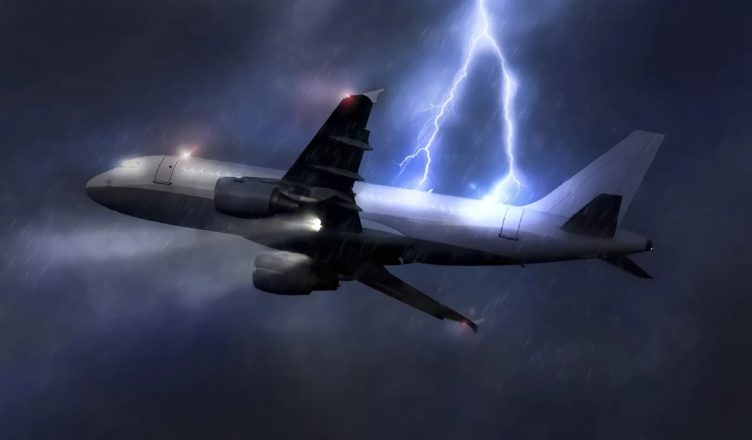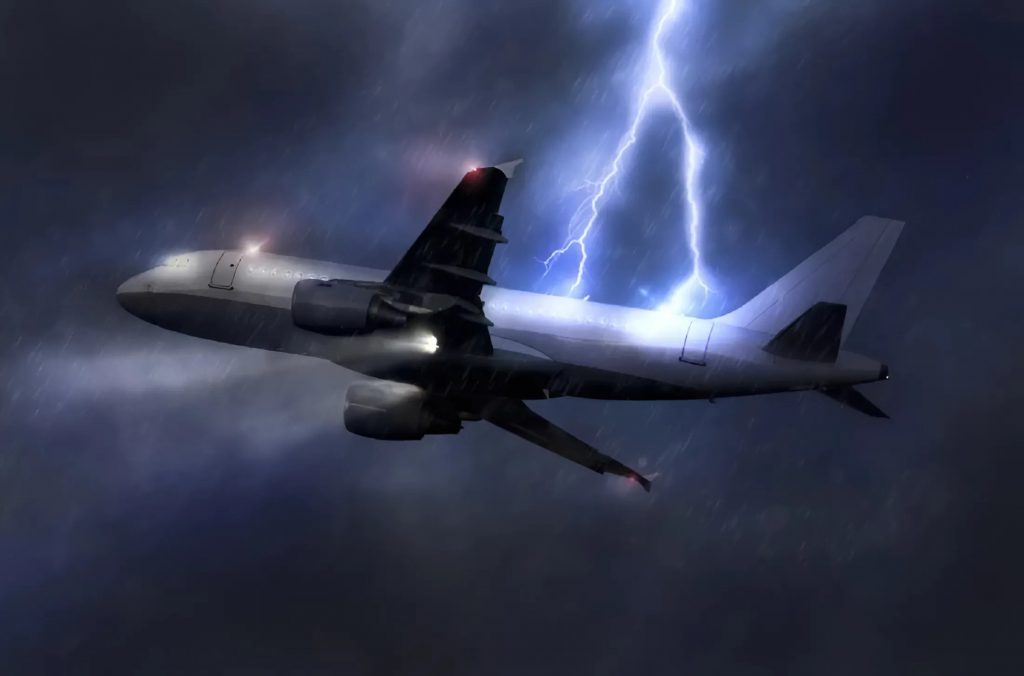When Lightning Strikes: What Happens to Airbus Planes During a Thunderstorm

Heavy rain pours outside. Dark clouds cover the sky, and the atmosphere is thick with tension. A commercial airliner, carrying dozens of passengers, climbs through the storm. Suddenly—a flash. A bolt of lightning strikes the aircraft. A blinding light, a burst of sound, and then… nothing. No crash, no emergency. The plane continues as if nothing happened.
How is that possible?
Because in modern aviation, a lightning strike is no longer a catastrophe—it’s a standard part of flight operations.
Lightning and Planes: A Common Encounter
Every year, the Earth is struck by lightning over 25 million times. Statistically, every commercial aircraft is hit by lightning at least once a year. This might seem alarming to passengers, but engineers and pilots see it as routine.
When lightning strikes an aircraft, it usually enters through one point—such as the nose or wingtip—and exits through another, like the tail or opposite wing. The electric charge travels along the plane’s exterior, made from conductive materials designed to safely channel the energy.

The people on board? They’re safe inside, completely unaware or only faintly aware of what just happened.
How Aircraft Withstand Lightning
Airbus aircraft, like the A320, A350, and others, are built with protection in mind. Their bodies are composed of aluminum alloys and composite materials with metallic mesh, which act like a Faraday cage—a concept where electric charges stay on the outside and do not penetrate the interior.
All critical systems—avionics, flight controls, communications—are shielded against electromagnetic interference. Electrical grounding paths are built into the structure, and fuel tanks are designed to prevent sparks, even under extreme conditions.
This design is the result of decades of research, testing, and tragic accidents that led to safer skies.
What Do Passengers Feel?
In most cases, nothing. Occasionally, a passenger near a window might see a bright flash or hear a muffled bang. Sometimes, there’s a brief flicker of cabin lights or a light vibration. But panic? Very rare.
Pilots are trained to recognize and handle lightning strikes calmly. A strike does not require an emergency landing unless there’s secondary damage. After the flight, a full inspection is carried out, especially at the entry and exit points of the lightning. But serious damage is extremely rare.
A Historical Lesson That Changed Everything
In 1963, Pan Am Flight 214 crashed after being struck by lightning, igniting fuel vapors in the wing tank. This disaster led to massive regulatory changes in aircraft design and testing. Since then, lightning protection has become an integral part of every certified commercial aircraft.
Modern Airbus planes are subjected to direct lightning strike simulations during testing. Engineers deliberately send high-voltage currents through prototype airframes to study how they react. These tests ensure that even under worst-case conditions, the aircraft will remain structurally and electrically safe.
Why Lightning Hits Planes
Airplanes often fly through or near cumulonimbus clouds, the very source of thunderstorms. Lightning seeks the quickest path to neutralize its charge imbalance—and a large, metallic aircraft in the sky is an attractive route.
Despite advanced weather radar systems that help pilots avoid severe storm cells, lightning remains unavoidable in some cases. But it’s not feared anymore—it’s factored in.
Why This Topic Goes Viral
Lightning continues to fascinate and frighten. It’s powerful, unpredictable, and dramatic. When people learn that the plane they’re flying on can take a direct lightning hit and keep going without any issue, it sparks curiosity, admiration, and a deep sense of wonder at what technology has made possible.
In fact, videos of lightning striking planes during takeoff or landing frequently go viral online. Why? Because it’s dramatic—yet perfectly survivable. These clips are visual proof of how engineering has tamed one of nature’s most violent forces.
Final Thoughts
When you’re flying through a storm and see a flash outside your window, remember this: you are inside a machine built not only to fly, but to withstand some of the most powerful natural forces on Earth.
The lightning may look terrifying, but the plane is ready for it. Engineers have turned a once-deadly threat into a manageable, tested, and expected part of aviation.
Modern aviation hasn’t eliminated the storm—but it has mastered the art of flying through it.
RELATED NEWS...
 Top Video Viral
Top Video Viral


